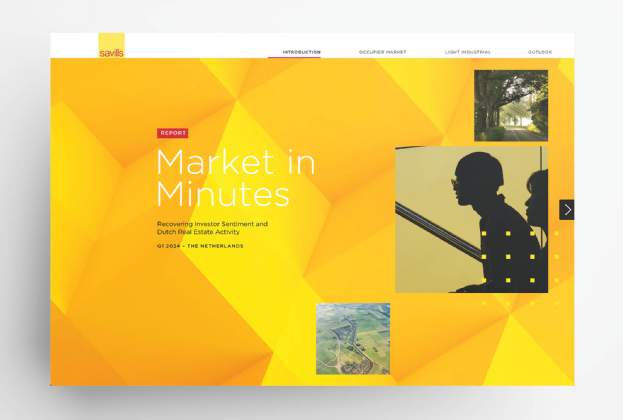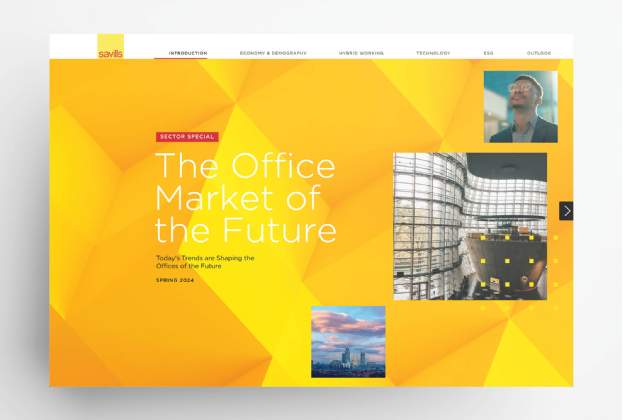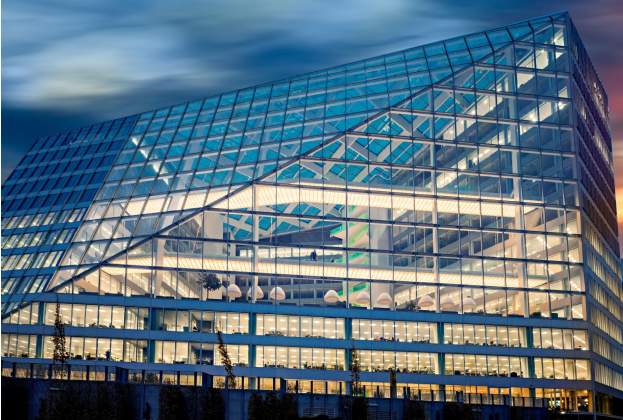This article was written by Iris Kampers, ESG Advisor, and Lotte de Jong, Head of Occupier Solutions at Savills in the Netherlands.
Sustainable conduct is nothing new. In real estate, owners are more aware of legislation such as Sustainable Finance Disclosure Regulation (SFDR). In the Netherlands, over 43% of the market has set targets regarding CO2, up from just 26% in 2018 (source: data from the S&P Corporate Sustainability Assessment), and according to Pitchbook research the interest in optimising energy efficiency to create more sustainable buildings is five times what it was three years ago.
It is safe to say we have entered the next stage of transition to a sustainable built environment. As the African proverb says, “If you want to go fast, go alone; if you want to go far, go together.” Which rings true in this new stage of sustainable conduct, where we are more interdependent on one another, and the way forward is through collaboration.
Collective responsibility
Our most important stakeholders in this equation are the owners and the occupiers of buildings. Especially in the office market, sustainable targets cannot be met if either of these parties is pulling the cart without the other. Occupiers can reduce energy use, but not enough to reach the Paris Agreement if the building does not meet EPC standards, or the owner invests in electrification. Similarly, if an owner creates a very sustainable building but the occupier keeps the thermostat at 25 °C in the winter and at 18 °C in the summer, the road to net zero remains a rocky one.
Complementing a focus on climate mitigation, or energy, to other themes within ESG is another part of this new phase. Our current approach is to stimulate demand for and the creation of energy from renewable sources that do not emit harmful gasses into the atmosphere. We are also trying to reduce overall demand for energy where we can. We hope things will change soon but, for now at least, there is no real reason to believe that this approach will cut global emissions to the point scientists say is necessary to prevent catastrophic climate change impacts. And that means we need to adapt.
Adaptation
Increasingly, both owners and occupiers turn towards water consumption targets, social targets such as tenant management or infrastructure to further their sustainable performance. There is, however, one that remains elusive - biodiversity.
Our natural ecosystems need to be strong enough to absorb greenhouse gases and thus recover from all the substances we’ve been pumping into the air. This is where biodiversity comes in. Protecting and restoring levels of biodiversity increases the diverse types of plants that can filter these chemicals currently polluting the air. Our biggest carbon sinks are mangrove forests and peatlands, for instance.
The UN estimates that a third of global greenhouse gas emissions reductions necessary for a healthy planet could come from improving the quality of our green space. This can include the built environment, as urban areas benefit immensely from green infrastructure in a number of ways. A biodiverse ecosystem has a stabilising effect on local climates, rainfall, heat and so on. By using biodiversity in our built environment, we can reduce the need to artificially regulate indoor temperature. In Europe, research shows installing green roofs on office buildings can drive down energy demand, saving up to 7% of regular electricity demand in summer and 3% of natural gas demand in winter.
Biodiversity is a solid foundation for social sustainability as well. Research into the WELL standards has shown that biophilic design, the incorporation of natural structures and organisms to increase occupier connectivity to the natural environment, can greatly reduce noise, speed up recovery after stressful events, and create a comfortable indoor climate passively.
This then brings us to an overview of our updated challenge, now that we are ready to face it. By focusing on integral solutions such as the promotion of biodiversity in our built environment, and doing so in collaboration with both owners and occupiers, we can take the next step towards the Paris targets. Really, we are considering all stakeholders, not just humans but over a trillion other species that are equally dependent on this planet.
Behavioural change occupiers
Writing down expected behaviour doesn’t necessarily mean people behave that way. If you want people to change, you need to educate them through their change curve and increase their level of commitment.
As occupiers aren’t pushed by legislations like owners, we need to pay attention to behavioural change regarding the performance of occupiers in sustainable buildings; stimulating the collective responsibility on ESG as well as ensuring the building is operating efficiently and sustainably.
Experience shows us that a suitable and proper change management programme is a successful tool for change.
This allows us to establish optimal usage of a building, embed new behaviours, empower, and reinforce skills required to let occupiers use the building effectively within its potential. We go further than only addressing a change within the mindset regarding ESG. Savills ESG Consultancy team seeks for user engagement within the process. Through user participation, adaptation, and communication we co-create workable behaviours. This requires interaction, clear communication, exemplary behaviours, and patience.
.jpg)
.jpg)
.jpg)
.jpg)
.jpg)
.jpg)

.jpg)


.jpg)